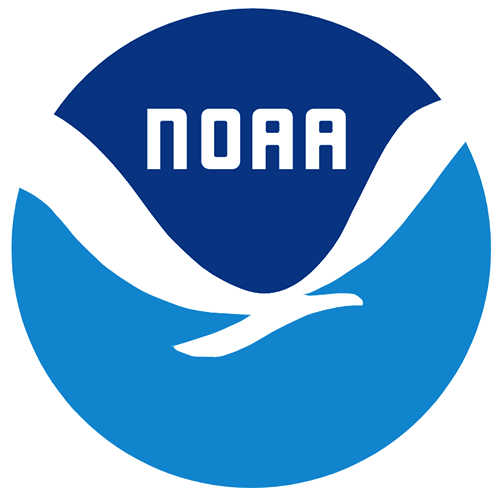2020 USACE USGS Topobathy Lidar: Cape May & Atlantic City, NJ
Welcome Guest ( Sign In )
NOAA
 These files contain classified topobathy lidar elevations generated from data collected by the Coastal Zone Mapping and Imaging Lidar (CZMIL) system. Data are classified as 1 (valid non-ground topographic data), 2 (valid ground topographic data), and 29 (valid bathymetric data). Classes 1 and 2 are defined in accordance with the American Society for Photogrammetry and Remote Sensing (ASPRS) classification standards. CZMIL integrates a lidar sensor with simultaneous topographic and bathymetric capabilities, a digital camera and a hyperspectral imager on a single remote sensing platform for use in coastal mapping and charting activities. Native lidar data is not generally in a format accessible to most Geographic Information Systems (GIS). Specialized in-house and commercial software packages are used to process the native lidar data into 3-dimensional positions that can be imported into GIS software for visualization and further analysis. The 3-D position data are sub-divided into a series of LAS files, which are tiled into 1-km by 1-km boxes defined by the Military Grid Reference System. The LAS file index is provided by the shape files, "MGRS_1km_18S.shp ", and the numbers used to identify files are in the "Box" field of the shape file. The data file naming convention is based on the year, effort, area, "Box" number and data product type. An example file name is "2020_USGS_NJ_18SVJ9738_GeoClassified_Ellipsoid.las", where 2020 is the year of data collection, USGS is the effort under which data were collected, NJ is the area of data collection, 18SVJ9738 is the "Box" number and GeoClassified_Ellipsoid is the data product type.
In addition to the lidar point data, topobathy bare earth Digital Elevation Models (DEMs) at a 1 meter grid spacing, created from the lidar point data are also available from the NOAA Digital Coast. Links to these data are provided in the URL section of this metadata record. DEMs at a a 1meter grid spacing, created from all classifications, are available by request at coastal.info@noaa.gov.
This data set is an LAZ (compressed LAS) format file containing LIDAR point cloud data.
These files contain classified topobathy lidar elevations generated from data collected by the Coastal Zone Mapping and Imaging Lidar (CZMIL) system. Data are classified as 1 (valid non-ground topographic data), 2 (valid ground topographic data), and 29 (valid bathymetric data). Classes 1 and 2 are defined in accordance with the American Society for Photogrammetry and Remote Sensing (ASPRS) classification standards. CZMIL integrates a lidar sensor with simultaneous topographic and bathymetric capabilities, a digital camera and a hyperspectral imager on a single remote sensing platform for use in coastal mapping and charting activities. Native lidar data is not generally in a format accessible to most Geographic Information Systems (GIS). Specialized in-house and commercial software packages are used to process the native lidar data into 3-dimensional positions that can be imported into GIS software for visualization and further analysis. The 3-D position data are sub-divided into a series of LAS files, which are tiled into 1-km by 1-km boxes defined by the Military Grid Reference System. The LAS file index is provided by the shape files, "MGRS_1km_18S.shp ", and the numbers used to identify files are in the "Box" field of the shape file. The data file naming convention is based on the year, effort, area, "Box" number and data product type. An example file name is "2020_USGS_NJ_18SVJ9738_GeoClassified_Ellipsoid.las", where 2020 is the year of data collection, USGS is the effort under which data were collected, NJ is the area of data collection, 18SVJ9738 is the "Box" number and GeoClassified_Ellipsoid is the data product type.
In addition to the lidar point data, topobathy bare earth Digital Elevation Models (DEMs) at a 1 meter grid spacing, created from the lidar point data are also available from the NOAA Digital Coast. Links to these data are provided in the URL section of this metadata record. DEMs at a a 1meter grid spacing, created from all classifications, are available by request at coastal.info@noaa.gov.
This data set is an LAZ (compressed LAS) format file containing LIDAR point cloud data.
